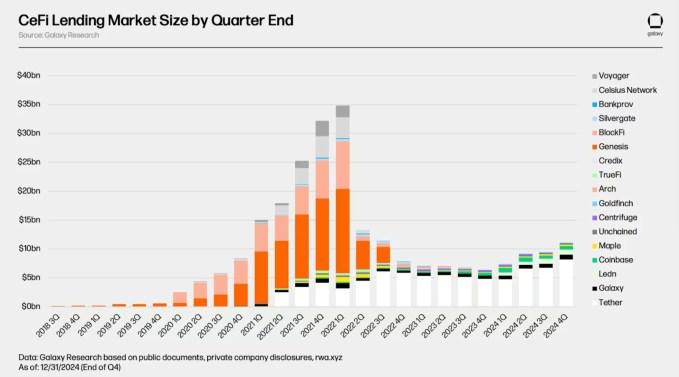I. Bowing to Compliance
How did Crypto transition from niche to mainstream? Over the past decade, decentralized blockchain provided a regulatory wilderness, and Satoshi Nakamoto's peer-to-peer electronic payment system did not succeed, but opened the door to a parallel world. Law, government, and even society and religion could not constrain this internet existing across countless nodes.
Being outside regulation was almost the only factor driving the industry's success, from ICO asset issuance and its subsequent variants, UNI-ignited DeFi, to today's so-called super application stablecoins - all built upon this factor, and removing TradFi's trivialities created today's industry.
Interestingly, after failing to explore new continents in the Age of Great Navigation, people began abandoning sailboats and returning to the past. Perhaps from the moment BTC ETF passed, or from Trump's election, native crypto has entered its twilight era. The industry began seeking compliance, seeking to supplement TradFi's needs, with stablecoins, RWA, and payment becoming mainstream development. Beyond this, we are left with pure asset issuance, where an image, a story, or a CA string becomes the only daily conversation. On-chain meme has long ceased to be a derogatory term.
How we reached this point has been analyzed in many past articles, but fundamentally, blockchain currently lacks effective means to constrain various entities behind addresses from misbehaving. We can only ensure nodes are honest and DeFi requires no intermediaries. Beyond this, we cannot prevent anything happening in this dark forest, and many things' decline is inevitable. NFT, GameFi, and SocialFi extremely depend on entities behind projects. Blockchain has excellent fundraising capabilities, but who will constrain project parties to reasonably use these funds and transform a story into a genuine project?
The non-financial vision cannot be resolved by infrastructure performance improvements. If these things cannot be done well on a centralized server, how can we expect them to be done on-chain? We cannot implement proof of work on project parties. Bowing to compliance now might be the beginning of non-financial development, which is ironically unavoidable.
Crypto is indeed becoming a subset of tradition, with this ledger's discourse rights being stripped away by upper layers. Bottom-up elements are becoming fewer, opportunities are being compressed, and we are welcoming an era of on-chain hegemony.
II. Stablecoins
[Image]
What is on-chain hegemony? I believe it can be explained from two aspects: first, stablecoins, and second, traditional internet stories are repeating.
[Rest of the text continues in the same translated manner]
CZ and Vitalik were puzzled by Meme, which led to the concept of DeSci, allowing speculators to speculate and researchers to innovate. It seemed they found common ground, but how could studying lab mice and classical mechanics be more interesting than internet memes and weird AI today? This narrative only caught fire for a moment, and after AI and DeSci cooled down, celebrity coins took the stage, from Trump in North America to Milei in South America, essentially squeezing out all liquidity.
When the market began to cool and narratives failed to connect, Ponzi schemes became necessary for asset issuance. Virtuals combined Binance Launchpool + Alpha's approach, staking for new token allocation, with the ability to restake, and indeed the token price soared. Emmm, so naked and direct, yet it no longer sparks my interest. What's next? Believe (internet capital market concept)?
I can't be certain, but in the previous cycle, amid various flywheels, Ponzi schemes, and narratives, DeFi remained a treasure that indeed sparked numerous fresh ideas. What can speculation in this phase create? I only see continuous simplification of issuance thresholds, with equally numerous malicious events following. Do we need a new set of rules?
IV. Attention
Previously, a project's rise depended on narrative and technology, bursting forth after consensus. Now we're buying attention, like Blur using points, or platforms using real money to create an MCN company for KOLs. PDD + Douyin's marketing approach permeates the industry, and compared to founders running conferences and discussing technology, this method seems much more direct and effective.
Attention is undoubtedly one of the most valuable assets of this era, yet difficult to measure. Kaito is now quantifying it, though Yap-to-Earn isn't particularly innovative, having been demonstrated in early SocialFi. Kaito's greatest innovation is AI-driven, claiming to identify information "value" and measure marketing capabilities using AI. However, this model clearly cannot truly capture long-term value, and Token is becoming a "fast-moving consumer good".
I believe everyone is deeply familiar with the drawbacks of the point system's three-pronged approach, and I've reviewed Blur's impact on this circle in previous articles. If future projects rely on purchasing attention, I find it hard to judge whether this behavior is wrong. I can only say that project marketing efforts aren't a crime, but the current circle has a trend of universal Pump. The old crypto era has indeed reached its end. Selling influence has become a mature business, from US presidents to Binance to current KOLs, with no project truly flourishing, everyone just taking what they need.
Conclusion
Stablecoins will move towards the world, and blockchain payment is inevitable. But perhaps the native inhabitants here don't need these, we need on-chain native stablecoins, we need de-financialization, we need the next wave, and we don't want to live in a Web3 that sells traffic. Time is indeed proving some BTC OGs right, but I still hope they are wrong.
Welcome to join BlockBeats official community:
Telegram Subscription Group: https://t.me/theblockbeats
Telegram Communication Group: https://t.me/BlockBeats_App
Official Twitter Account: https://twitter.com/BlockBeatsAsia








